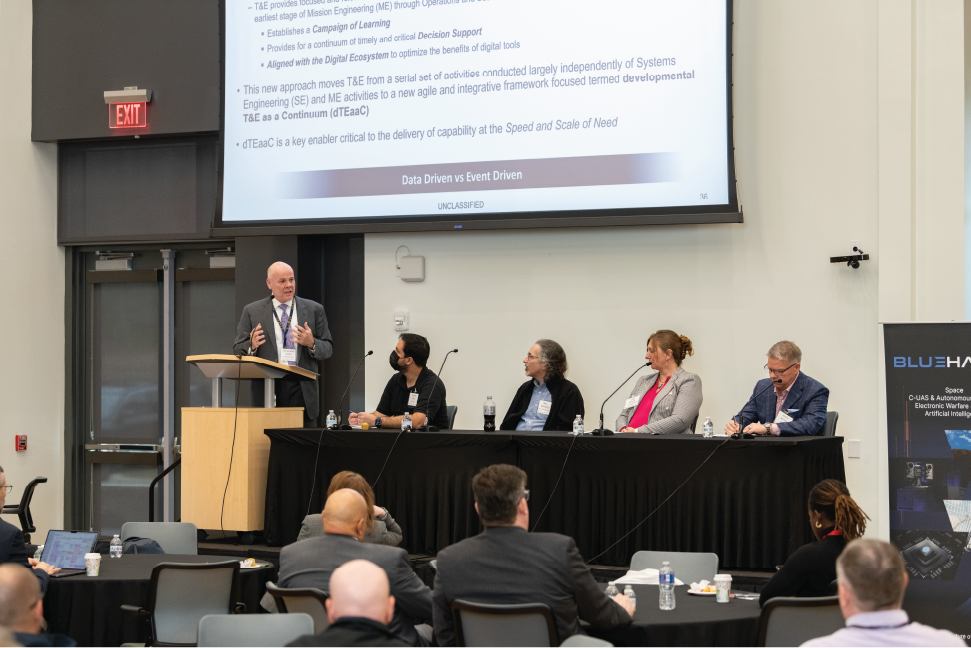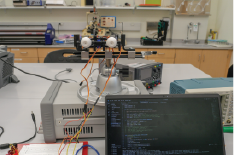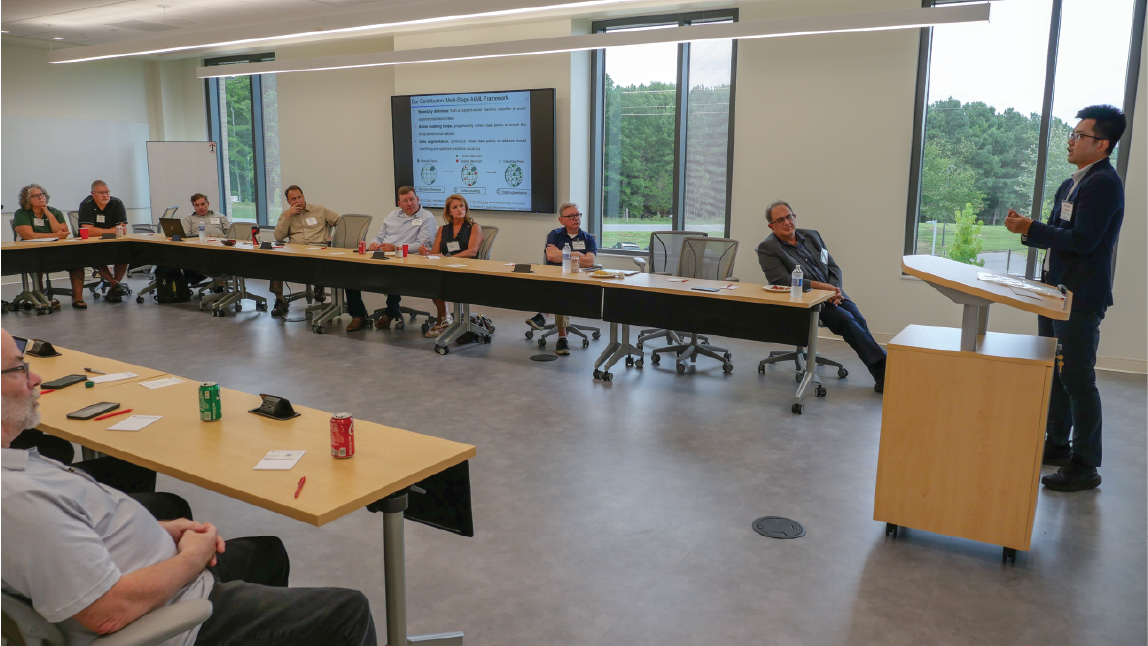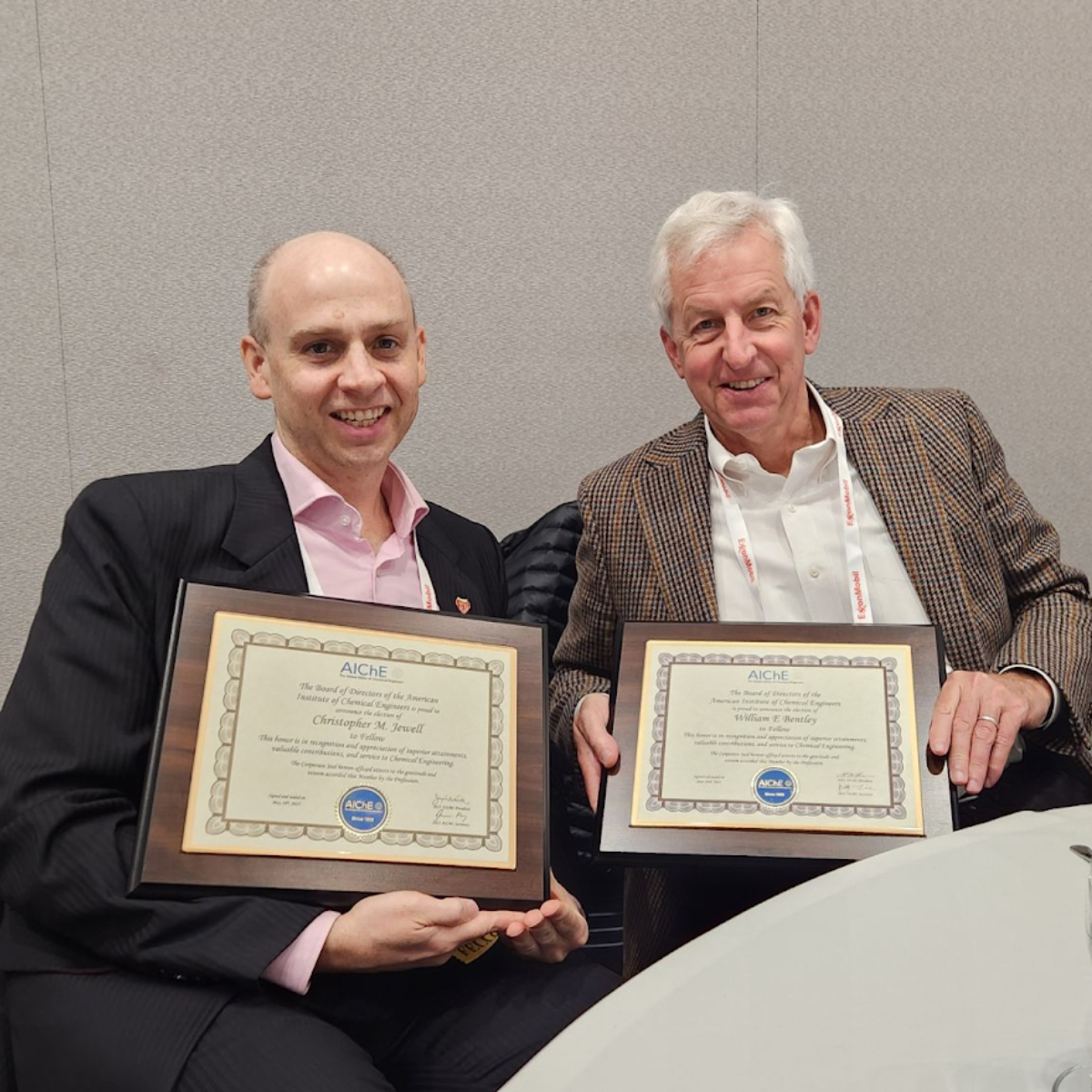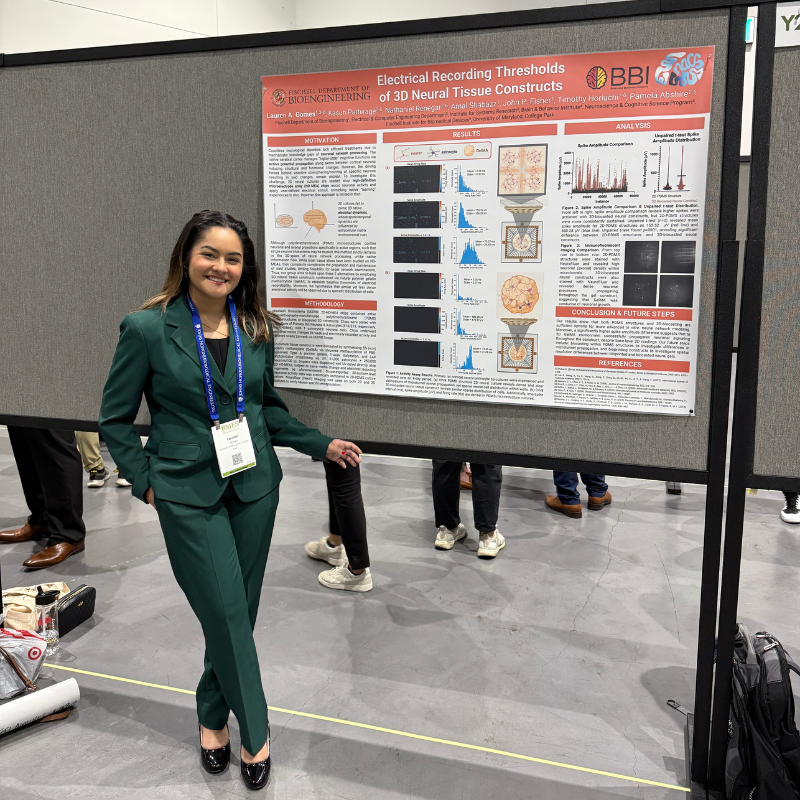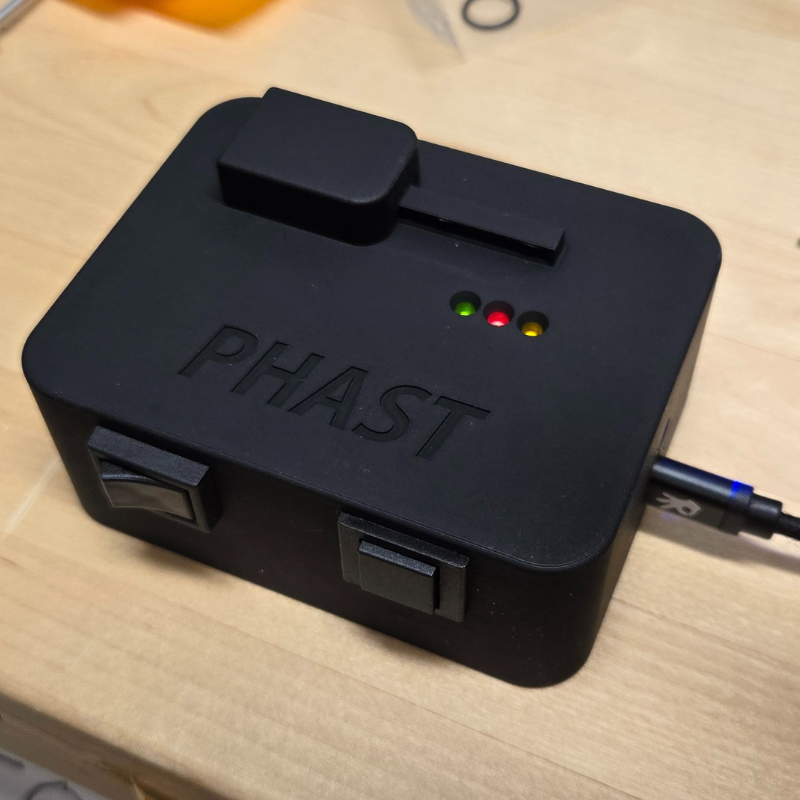News Story
University of Maryland Represents at International Autonomy Event
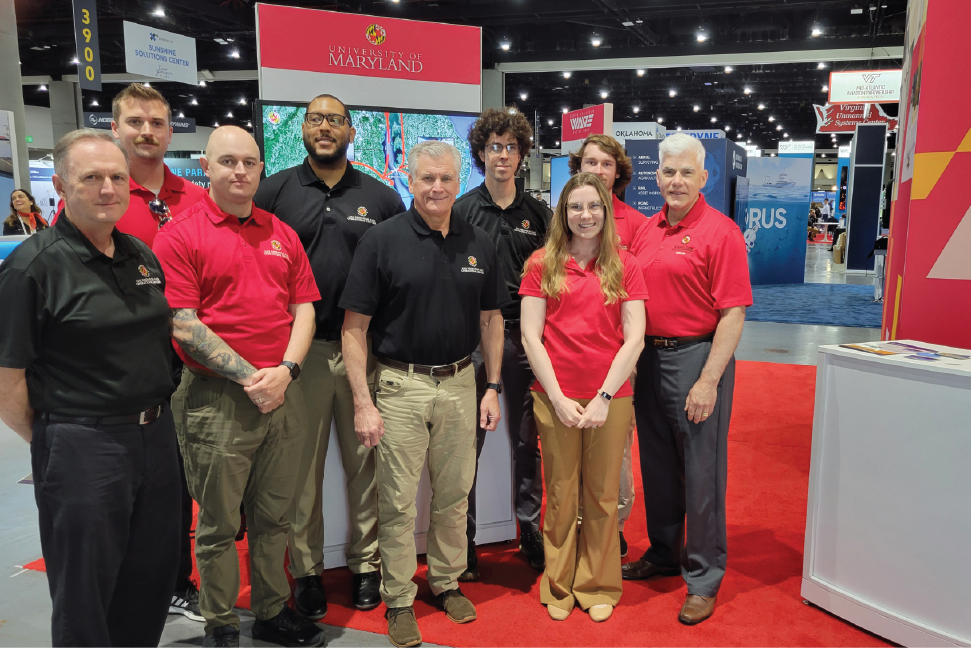
From left to right: Jim Alexander (UROC), Grant Williams (UROC), Gregory Green (UROC), Benjamin Griffith (UROC), John Slaughter (UROC), Josh Gaus (UROC), Lauren Bacon (MATRIX), Christopher Titus (UROC), Matt Scassero (MATRIX). Click to expand.
Uncrewed systems experts and enthusiasts flocked to San Diego, California for “the technology event for autonomy” – AUVSI Xponential 2024.
Maryland at Xponential
Maryland’s booth at Xponential featured eight companies representing the state’s robust multi-domain autonomous and uncrewed systems industry.
- The University of Maryland (UMD) UAS Research and Operations Center (UROC) – provides expertise related to drones, regulations, and operations
- Packing Strategies Incorporated – designs and manufactures systems integration packages and container solutions
- Wave Engine Corp. – develops technology poised to enable UAS to offer the same performance as regional airlines
- Valence Vector Labs – specializes in hardware penetration and vulnerability analysis of UAS
- SURVICE – tests and evaluates as well as analyzes systems to protect, enhance, and enable technologies
- Maxtena – designs and manufactures advanced antenna solutions for Global Navigation Satellite Systems (GNSS), Terrestrial and Satellite Machine-to-Machine (M2M), and Mobile Satellite Services (MSS) applications
- Hurley IR – manufactures infrared and visual camera systems used on a variety of platforms
- Airgility – creates UAS that can fly anywhere, including areas where there is limited or no GPS access and in confined areas
Members of the UMD MATRIX Lab team attended Xponential to create an expanded UMD presence with UROC as well as connect, learn, and share.
Addressing Topical Concerns
This year’s key themes included cybersecurity policy and regulations, especially related to Blue and Green Uncrewed Aircraft Systems (UAS). Blue-compliant UAS have passed the Department of Defense’s Defense Innovation Unit (DIU) evaluation and are able to be used by the U.S. government. Green UAS is a newer program that mirrors the Blue UAS certification program and aims to increase the number of cybersecure UAS. We learned at Xponential that DIU is improving its vetting process so companies will have an easier time selling their drones to the U.S. military and other federal government work.
The Federal Aviation Administration (FAA) is working to modernize the national airspace through policy and regulations. Easing beyond visual line-of-sight (BVLOS) flying restrictions could mean expanded access to essential services like drone deliveries of supplies, medicines, and products. Changes may come in Part 108 of Title 14 of the Code of Federal Regulations.
The FAA’s vision for the new future of aviation also includes Advanced Air Mobility (AAM), aircraft that are highlight automated and electric. The concept, along with Urban Air Mobility (UAM), aims to develop an efficient and sustainable air transportation system that moves people and cargo to and around urban areas.
Meanwhile, the UMD UROC is also spearheading regional efforts to better integrate UAS into the airspace. They are working on a regional set of flight paths called the Chesapeake Bay UAS Route Network (CURN). The project has the potential to expand the use of commercial drones in Maryland.
Looking to the Future
The conference revealed important trends in the industry. Organizations are using autonomy, including artificial intelligence and machine learning, to make the decision-making process more efficient. When it comes to robotics, there is particular interest in humanoids and quadrupeds. Robots are increasingly being used in several diverse industries.
- Manufacturing – welding, assembly, shipping, handling, packing
- Delivery – food, medicine (UROC received a U.S. Department of Transportation SMART Grant to work on delivering emergency and medical supplies to remote areas – read more here)
- Healthcare – canes, braces, American Sign Language communication
- Defense – carrying equipment, operating in dangerous situations, search and rescues
- Agriculture – handling pests and weeds, growing and harvesting crops
- Environment – solar panels, wind turbines, recycling, cleaning
Speakers pointed out that robots would be a great resource for underserved markets like elder care and home care, but with the current state of the industry, they are often unaffordable. They said industry growth can start with small startup companies, which often address specific needs in niche markets. They stressed the importance of investing in them.
They also believe new technologies can play a role in preventing and fighting large wildfires. This is the focus of the XPRIZE Wildfire international competition, which a University of Maryland team, Crossfire, has entered. They said now is the time to start thinking about use cases for autonomy, because the technology is well on its way.
Despite the popularity of automated transportation, speakers said many people are shying away from it. That’s because of the many challenges that need to be solved, including necessary infrastructure changes and questions over liability and safety. During the conference, in multiple sessions and throughout conversations and sidebars, trusted autonomy was an important topic.
“As we grow the use cases and have an eye on risk management, how we test, evaluate, assess, and ultimately trust autonomy is key to not only efficacy, but also public acceptance of these capabilities,” said Matt Scassero, MATRIX Lab Director of Operations and Outreach. “These are key research and education areas the University of Maryland is focusing on.”
Throughout the conference, speakers shared important lessons like efficiently use resources by gathering more information and don’t just create – consider how you’re creating something and how you’re using it. Other key themes included infrastructure and operations, technical research and development, and data and analytics.
The event was cohosted by the Association for Uncrewed Vehicle Systems International (AUVSI) and Messe Düsseldorf North America and held April 22-25, 2024 at the San Diego Convention Center.
Published May 9, 2024
